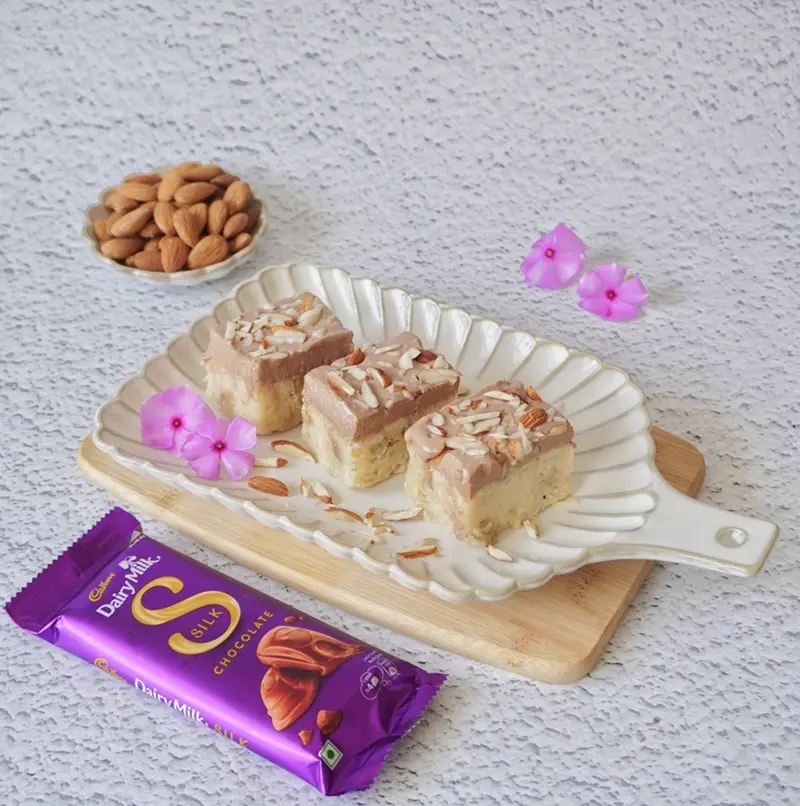A popular and traditional South Indian sweet dish is called Rava Kesari, sometimes referred to as Kesari Bath or Kesari. Semolina (rava or sooji), ghee (clarified butter), sugar, and water are used to make it. Cardamom is added for flavour, and cashews and raisins are used as garnish.

A popular and traditional South Indian sweet dish is called Rava Kesari, sometimes referred to as Kesari Bath or Kesari. Semolina (rava or sooji), ghee (clarified butter), sugar, and water are used to make it. Cardamom is added for flavour, and cashews and raisins are used as garnish.
The dish tastes rich and sweet with a brilliant, vibrant colour. In South India, it is frequently made for festivals, celebrations, and special occasions. "Kesari" comes from the word "kesar," which translates to "saffron." The dish's distinctive orange-yellow colour is achieved through the use of food colouring or saffron.
All ages enjoy Rava Kesari, which is served as a dessert or sweet treat. This is a very adaptable dish that is made differently in different parts of South India using different ingredients and techniques.
Origin of Rava Kesari:

Southern India is the birthplace of the well-known Indian sweet dish rava kesari, also referred to as kesari bath or kesari halwa. The term "kesari" describes the dish's saffron colour, which is produced by adding food colouring or saffron.
Although Rava Kesari's exact origins and history are unclear, it is thought to have started in southern India, specifically in the states of Karnataka and Tamil Nadu. This is a typical dessert made for holidays, special events, and religious rituals.
Although Rava Kesari is a traditional South Indian dessert, other parts of the nation have their own versions of the dish with slightly different ingredients and preparation methods. It has grown to be a beloved and well-liked treat in India that appeals to all age groups.
In addition to being a delectable treat, the dish has cultural significance in Indian households because it is served during religious celebrations and ceremonies. Its broad appeal can be attributed to the ease of preparation and the simplicity of its ingredients.
Importance Of Rava Kesari:

Serving Rava Kesari to visitors is a customary act of hospitality among South Indians. Serving sweet food to guests is a polite and welcoming gesture. Because it's so delicious and comforting, Rava Kesari is a popular choice for this occasion.
Rava Kesari is offered as prasadam (a religious offering) in temples or during religious ceremonies in some South Indian households. It is regarded as a representation of wealth and sweetness.
How To Make Rava Kesari:
This is a basic recipe for Kesari or Rava.
Ingredients:
- One cup sooji or rava semolina
- One cup of sugar
- Ghee, or clarified butter, half a cup
- three cups of water
- One-half tsp cardamom powder
- A small amount of saffron threads (optional; for flavour and colour)
- Nuts (such as almonds, cashews, and raisins) for garnish
- A few food colouring drops (optional; adds a brighter hue)
Preparation:
Semolina Roasting: Put the semolina (rava) into a pan and heat it over medium heat.The semolina should be dry-roasted until golden brown and fragrant with nuts. Stir often to prevent burning. This stage is essential to the Kesari's flavour.
How to Make Sugar Syrup: Heat the water in a different saucepan. Add the sugar and stir until it dissolves completely once it begins to simmer. You can also add colour and flavour to the sugar syrup, add saffron strands.
How to Cook Rava: To prevent lumps, gradually incorporate the roasted semolina into the sugar syrup while stirring constantly. The mixture may splutter, so proceed with caution. To guarantee that the semolina absorbs the water and cooks evenly, keep stirring.
Flavourings : Heat the ghee in a separate small pan. When the nuts are golden brown, add them and continue to sauté. Set aside a handful of nuts for garnish. To the semolina mixture, add the nuts and ghee, mix thoroughly. For taste, add cardamom powder. You can now add a few drops of food colouring if you'd like a brighter colour.
Last Bite: Cook and stir the mixture until it thickens and pulls away from the pan's sides. The consistency of the Rava Kesari should be similar to halwa. Cut the heat off.
Serve and garnish: Add the reserved nuts as a garnish for the Rava Kesari. Turn it out warm. It goes well with coconut chutney on the side or all by itself.
Like This Article?
More Like This


Popular Articles





Trending Web Stories
Curated Recipes




















